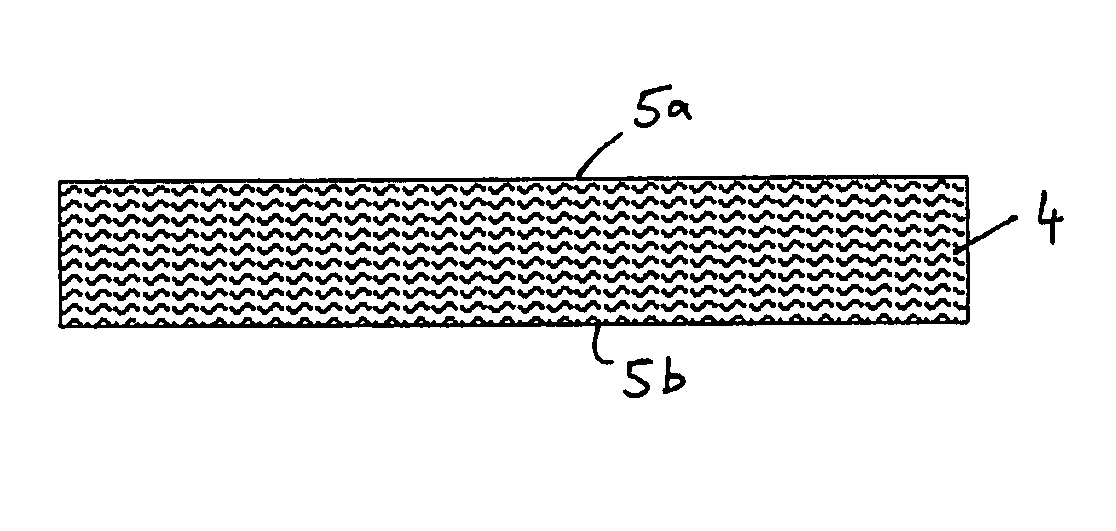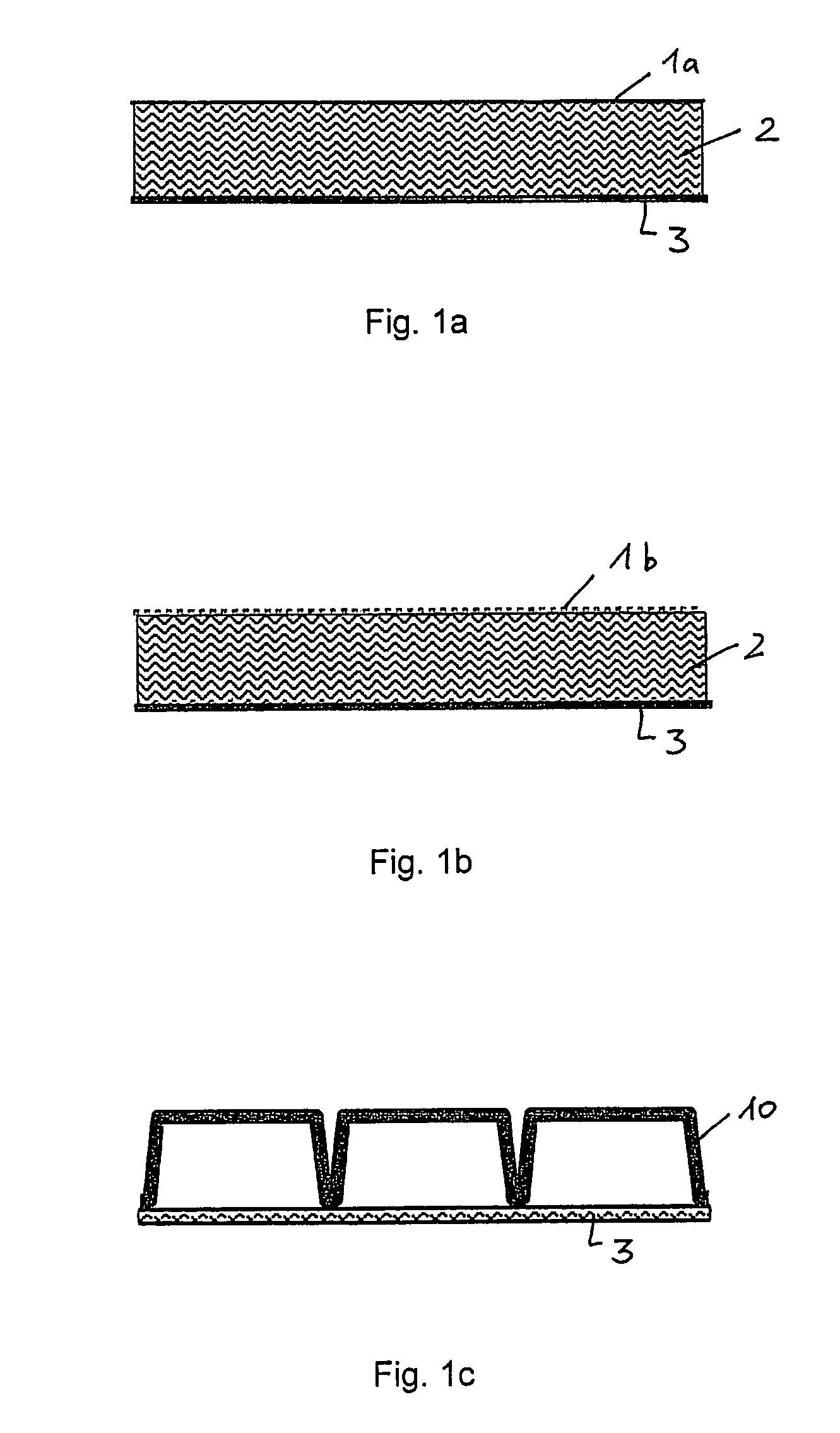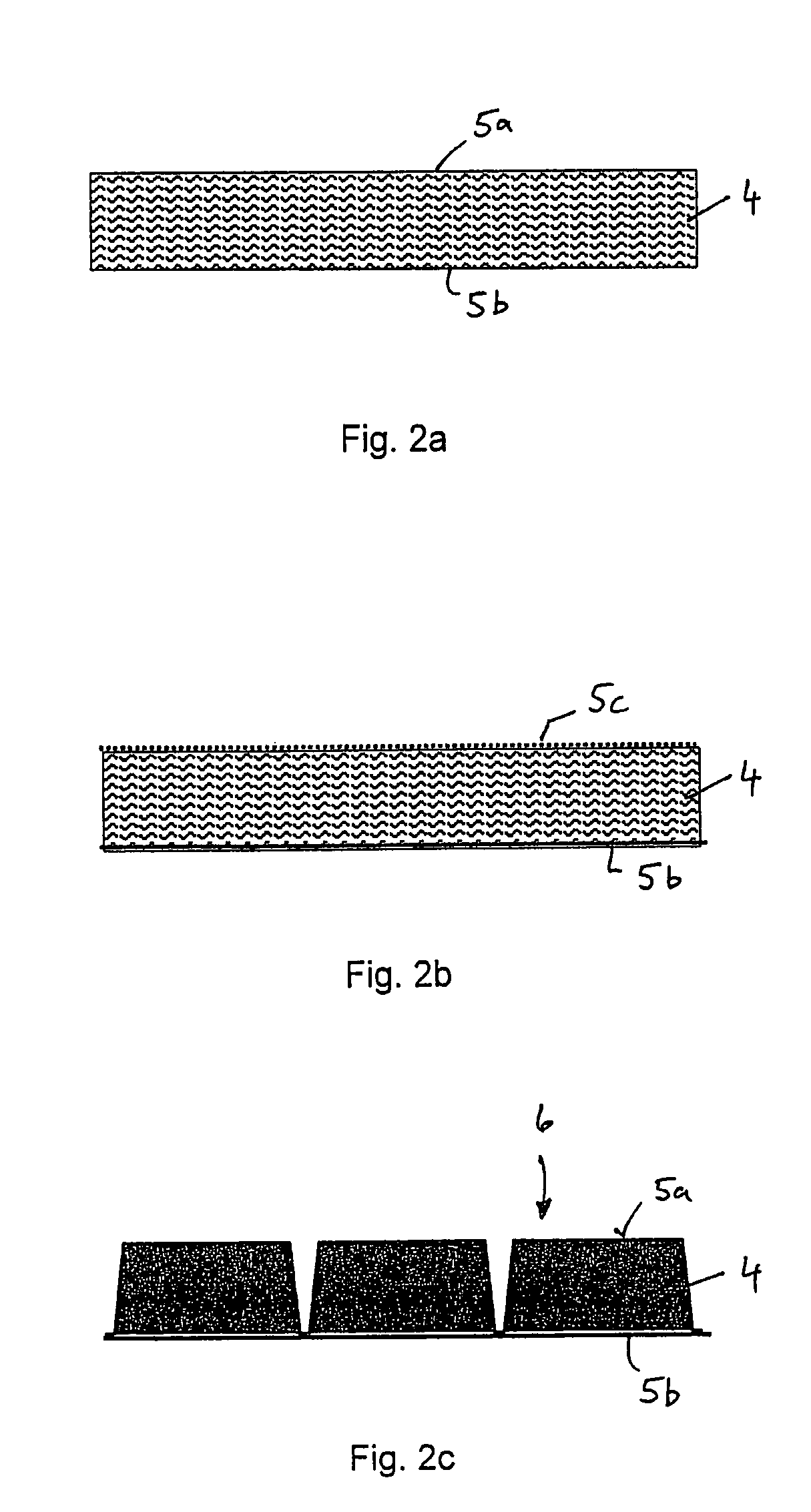Acoustic cover part for a vehicle
a technology for acoustic covers and vehicles, applied in the direction of roofs, machines/engines, manufacturing tools, etc., can solve the problems of not being able to produce a complete noise enclosure, structures for reinforcing or additional functionality, and can only be attached to a limited extent, so as to maintain the stiffness, impact resistance, and elastic modulus properties
- Summary
- Abstract
- Description
- Claims
- Application Information
AI Technical Summary
Benefits of technology
Problems solved by technology
Method used
Image
Examples
Embodiment Construction
[0013]The invention described here is based on the task of creating a cover part for a vehicle, especially for the underbody, cover noise enclosure cover, or wheel well cover that integrates the properties of the systems described above for acoustic and heat insulation while maintaining the stiffness, impact resistance, and elastic modulus properties of the glass fiber-reinforced components.
[0014]According to the invention, the components of glass fiber-reinforced support plates, sound absorbers, heat insulators, nonwoven linings, etc., are no longer separated in their functional arrangement and in their successive production. The properties are combined in a single material or layer arrangement, wherein in a single shaping process an engine compartment cover, an underbody cover, a wheel well, or other inherently stiff components are produced from such a material composite. This results in clear cost reductions compared with most well known multiple-step production methods. Finally,...
PUM
| Property | Measurement | Unit |
|---|---|---|
| Thickness | aaaaa | aaaaa |
| Thickness | aaaaa | aaaaa |
| Thickness | aaaaa | aaaaa |
Abstract
Description
Claims
Application Information
 Login to View More
Login to View More - R&D
- Intellectual Property
- Life Sciences
- Materials
- Tech Scout
- Unparalleled Data Quality
- Higher Quality Content
- 60% Fewer Hallucinations
Browse by: Latest US Patents, China's latest patents, Technical Efficacy Thesaurus, Application Domain, Technology Topic, Popular Technical Reports.
© 2025 PatSnap. All rights reserved.Legal|Privacy policy|Modern Slavery Act Transparency Statement|Sitemap|About US| Contact US: help@patsnap.com



